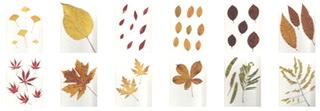
“The autumn leaves” was one of my mother’s favourite songs. Whenever it came on the radio, she would sing along romantically. So I decided to look at some leaves this autumn. Here is the first group from A to G by scientific name to keep genera together. (My next article in the new year will look at some leaves from H to S.) The leaves are not in alphabetical order, but in order of complication, that is from simple leaves without teeth, leaves with teeth, leaves with lobes, to compound leaves.
Let us begin with one of the oldest species, from 225 million years ago: Ginkgo biloba. Not one of these ginkgo leaves lives out its scientific name where biloba means “two lobes.” Nevertheless they display every other feature of ginkgo leaves with a fan-shaped leaf blade, a petiole longer than the leaf blade, multiple veins spreading like a fan, and a wavy crest.
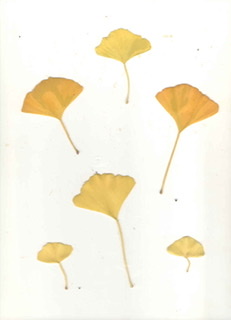
One Catalpa speciosa leaf comes next. C. speciosa, northern catalpa, is the taller of the two catalpa trees planted in Vancouver and native to the southern US. The leaf is yellow in fall, somewhat heart-shaped, and pointed at the tip. The margin is entire; it has one central vein, with secondary veins appearing randomly. This is one of the smallest catalpa leaves I could find. Catalpa is a big-leaf genus, and when we have a lot of rain and wind in the fall, the leaves get heavy and act like wet sails, endangering the ability of the tree to stay upright in the ground.
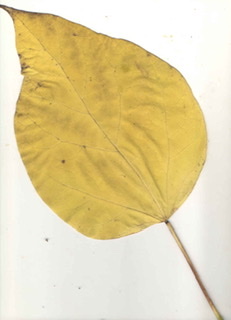
What a treat to come across a Euonymus alatus ‘Compactus’, burning bush. Of course, the common name comes from the flame colour of its leaves in the fall. Each leaf is small with a central vein, barely visible secondary veins, and lightly toothed and/or hairy leaf margins.
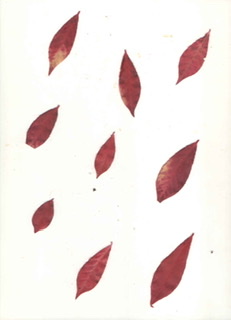
Next are nine leaves from a Carpinus betulus ‘Fastigiata’, pyramidal European hornbeam, a very forgiving street tree, as it continues to grow well after being pruned by the trucks going by. This is in Betulaceae, the birch family. This always surprises me as the leaf is like a smaller version of a beech leaf, which is a different genus and a different family altogether. Note the tan colour, the central vein, the strong pairs of secondary veins, and the toothed margin on each leaf.

In order to compare, here are five leaves of Fagus sylvatica ‘Purpurea’, purple European beech. The family is Fagaceae, the beech, oak, and chestnut family. The leaf blade is oval with a tip that narrows, a strong central vein, and between 5 and 9 secondary veins. The leaf is wavy around its margin and has some small dentations. The leaf stalk is short. Regular Fagus sylvatica fallen leaves are more of a rust colour.
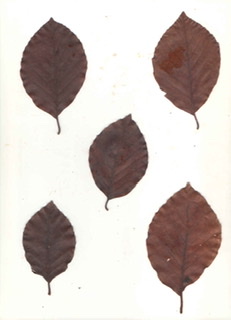
These three leaves are Castanea sativa, sweet chestnut leaves, also in Fagaceae, the beech, oak, and chestnut family. The fruit are the chestnuts sung about in winter: “Chestnuts roasting on an open fire.” Notice that the leaves of sweet chestnut are simple, are oblong or lance-shaped, and are sharply toothed. The fruit husks have a multitude of slim and sharp prickles but the squirrels carry them off anyway because they love the chestnuts inside.
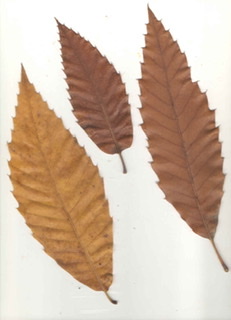
Acer japonicum and A. palmatum are two maples native to Japan. All maples are in Sapindaceae, the soapberry family. (The family name of Aceraceae has mostly been retired.) Both species have palmate leaves with five or more lobes radiating from where the petiole (the leaf stalk) attaches the leaf to the twig. However, the preponderance of cultivars of these species makes it very difficult to identify one species from the other. The common name for A. japonicum is full moon maple; note the full moon (or palm) of leaf before the lobes point outward; note also the leaf’s similarity to that of a vine maple. These leaves and the double samaras are bigger than those of A. palmatum. The common name for A.palmatum is common Japanese maple and, of the two species, it is planted more frequently.


Next is a leaf from an Acer macrophyllum, bigleaf maple, native to our Pacific Northwest, and the largest of all the maples. This is the smallest fallen bigleaf leaf I could find. Most leaves took two 8.5x11 pages to scan! These palmate leaves mostly are 5- to 7-toothed lobes with very deep sinuses. The two lobes beside the petiole on this leaf are quite small, so it looks as though it has 3 lobes and 2 additional wings. The sinuses can be so deep and slim that the lobes either overlap or appear to be parallel.

Acer saccharinum is the silver maple. The leaves seem to be the most decorative of the maples, with 3 toothed lobes and 2 additional wings near the petiole. In fall, the leaves are yellow on one side and almost white (seen as silver in a breeze) on the other, retaining their two-coloured leaf feature.
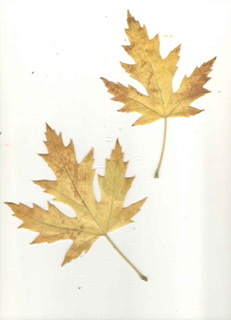
Aesculus hippocastanum, horsechestnut tree, also has a palmate leaf structure, but the five elements are leaflets rather than lobes; thus this is one compound leaf. The scientific genus name refers to the fruit of the horsechestnut, suggesting that it is as edible as the acorn of an oak tree (Aesculus means “oak”), though in fact it is inedible. The species epithet for A. hippocastanum was named because of the similarity of its fruit and its inedible seeds, known as conkers, to the edible fruit of Castanea sativa—hippocastanum means an edible chestnut for a horse. In fact, a horsechestnut’s fruit is inedible for horses as well as people, though squirrels tolerate its toxicity well. Also, where C. sativa is in Fagaceae, A. hippocastanum is in Sapindaceae, the soapberry family—two different plant families.
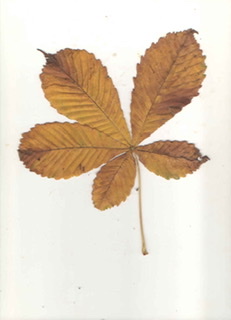
Next is another compound leaf, this one being bipinnate: Albizia julibrissin, commonly known as silk tree or hardy mimosa. The term pinnate refers to the leaflets’ likeness to the barbs on a feather. The terms in botany are “leaflets on a rachilla.” And each leaf is bipinnate because the leaf comprises many rachillas on one rachis, one axis. Hardy mimosa’s leaflets and rachillas are opposite. Alongside the one leaf in this image are three flat seed pods; the species is in Fabaceae, the pea, bean, and legume family.
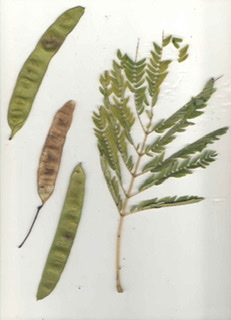
Last is another bipinnate compound leaf, this time with the leaflets and rachillas mostly alternate:
Gleditsia triacanthos var. inermis, thornless honeylocust. The small leaflets are oval and the entire leaf is the colour of honey.
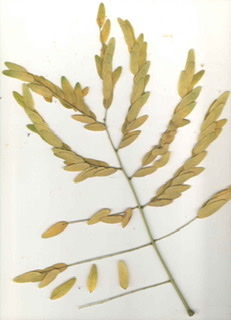
🖊&📷 Vancouver Master Gardener Nina S.